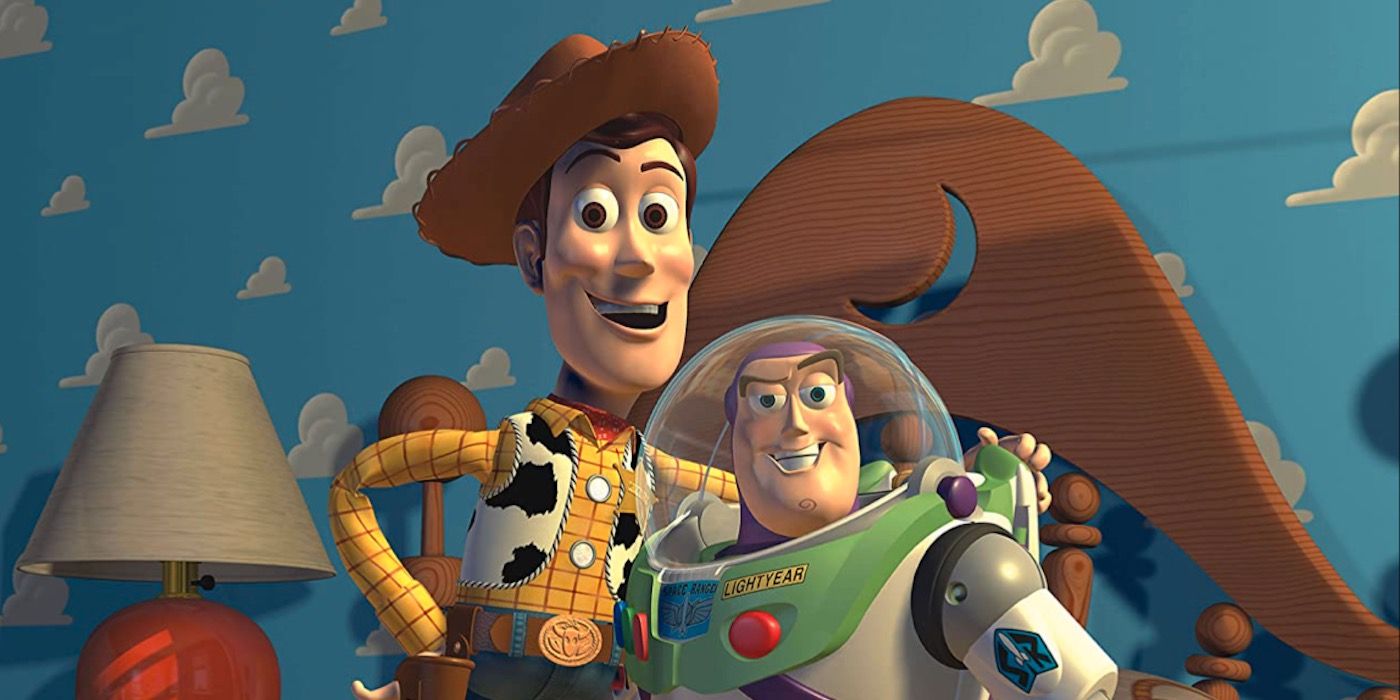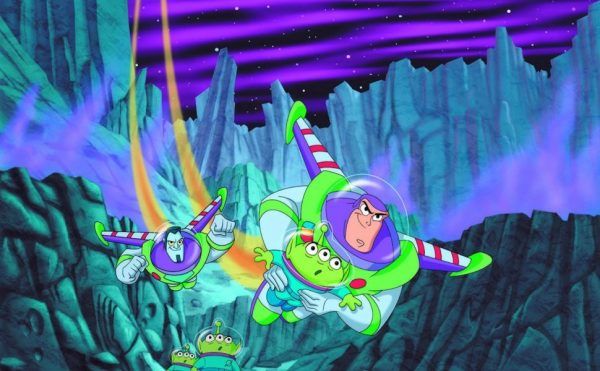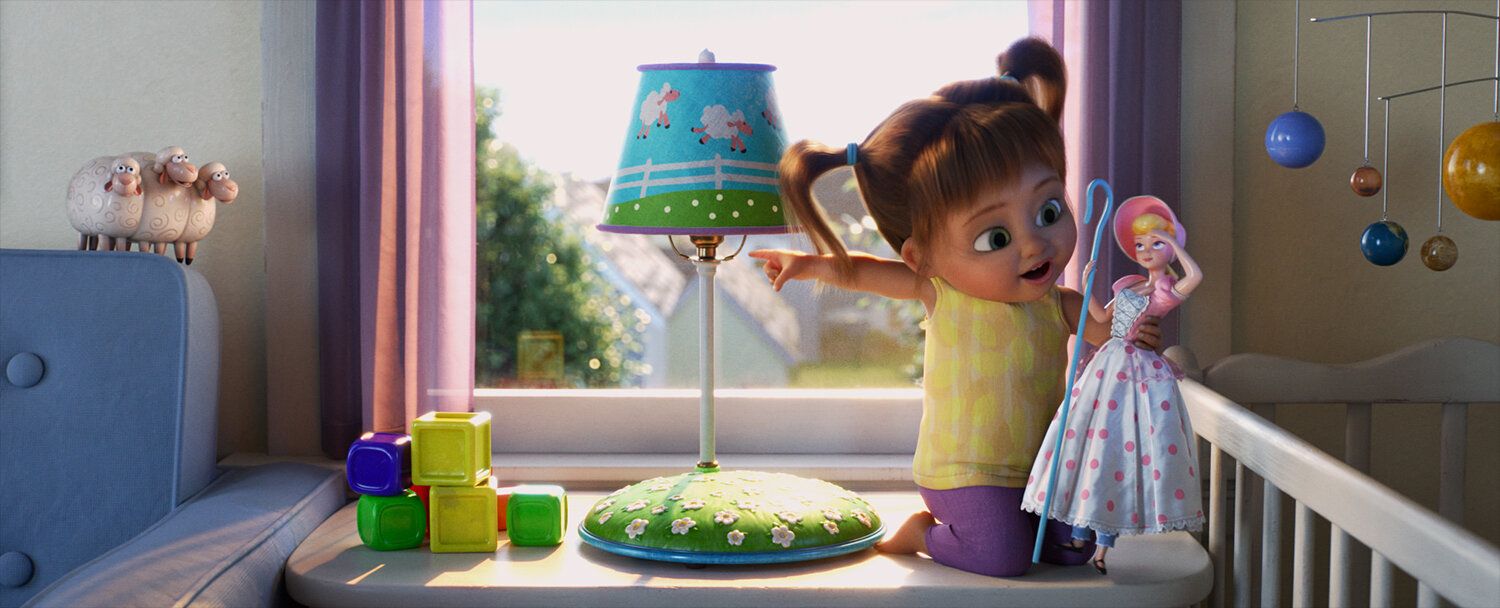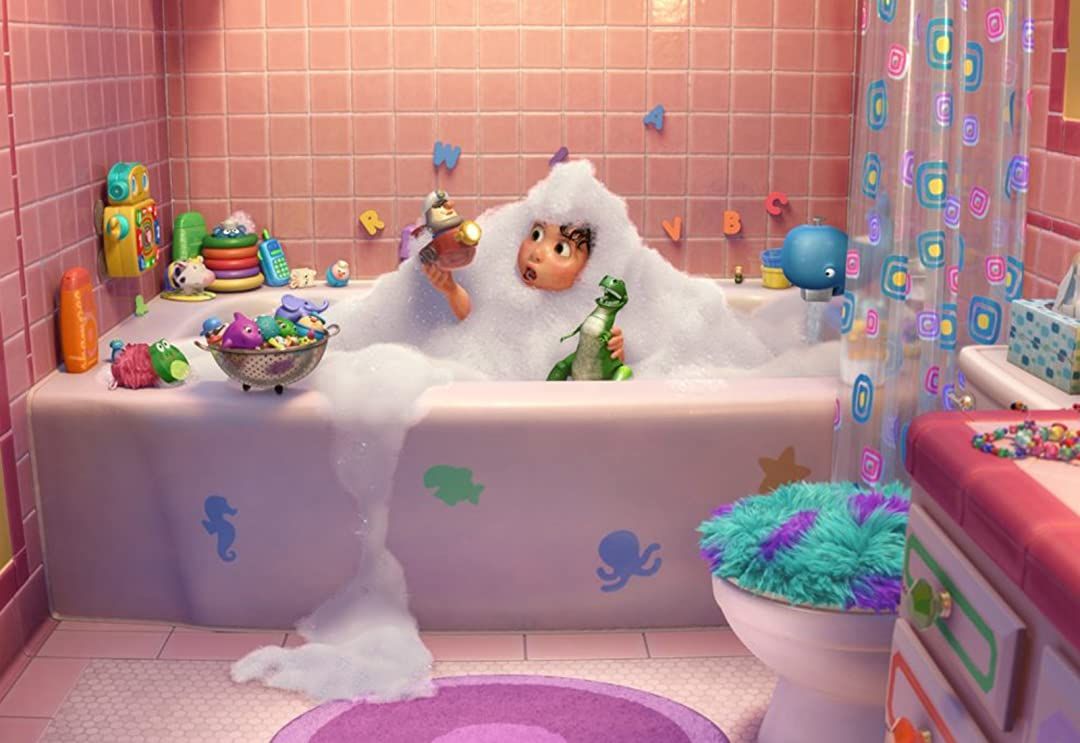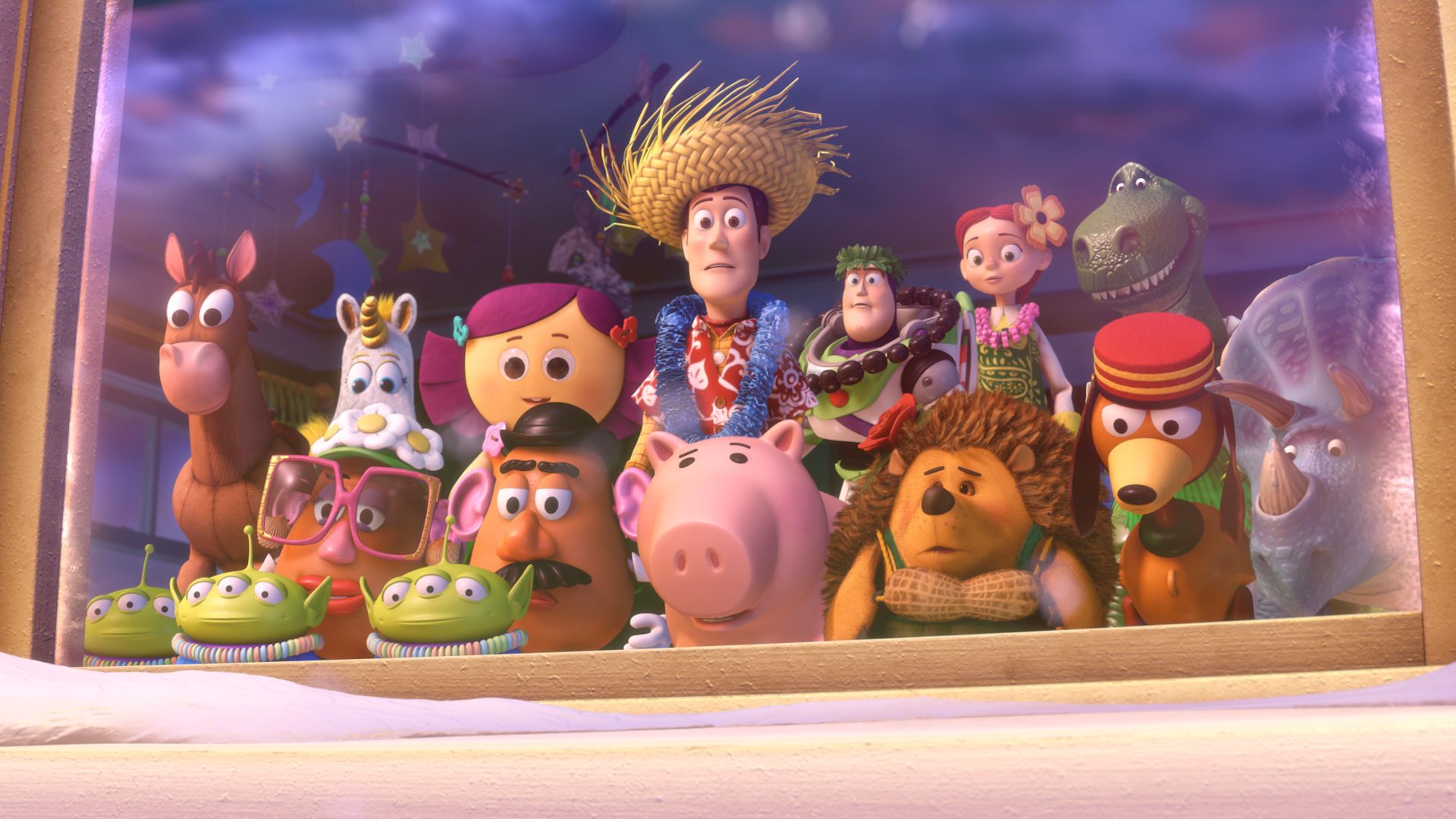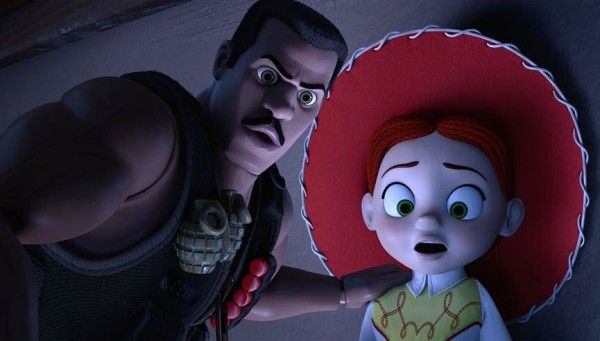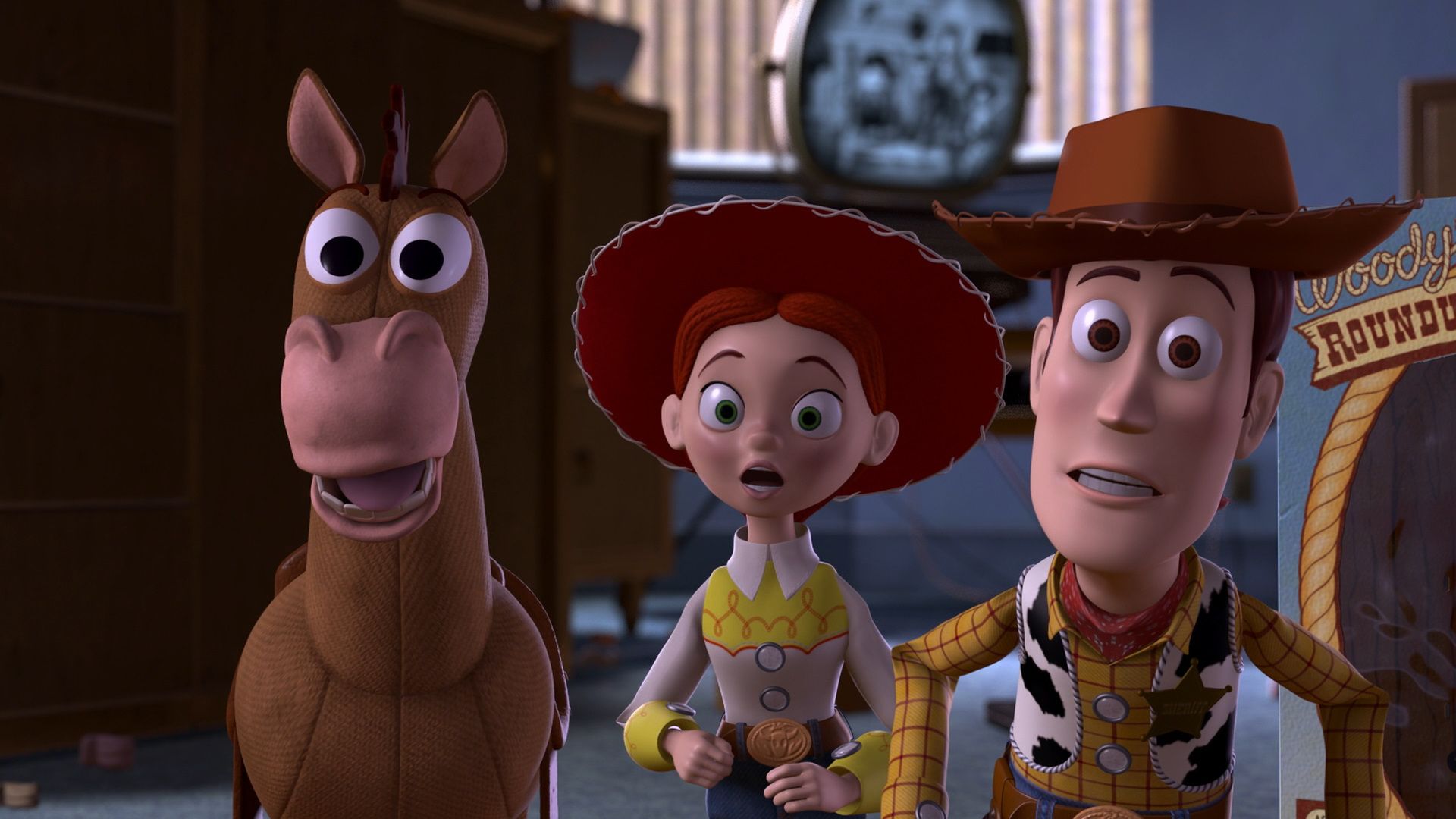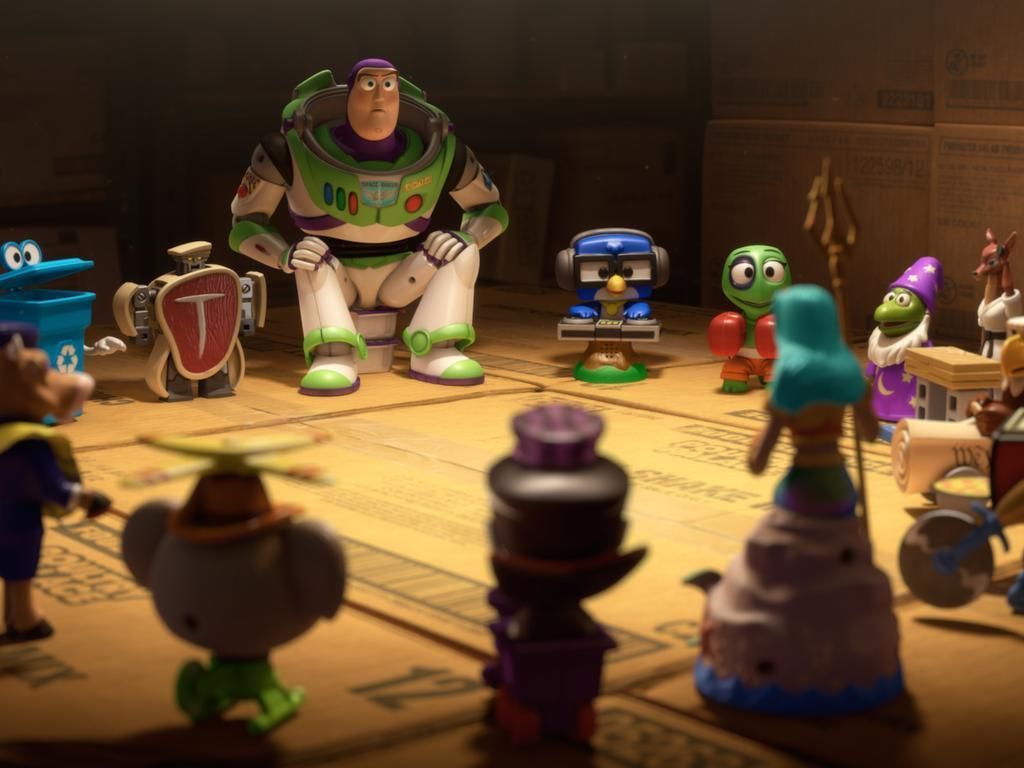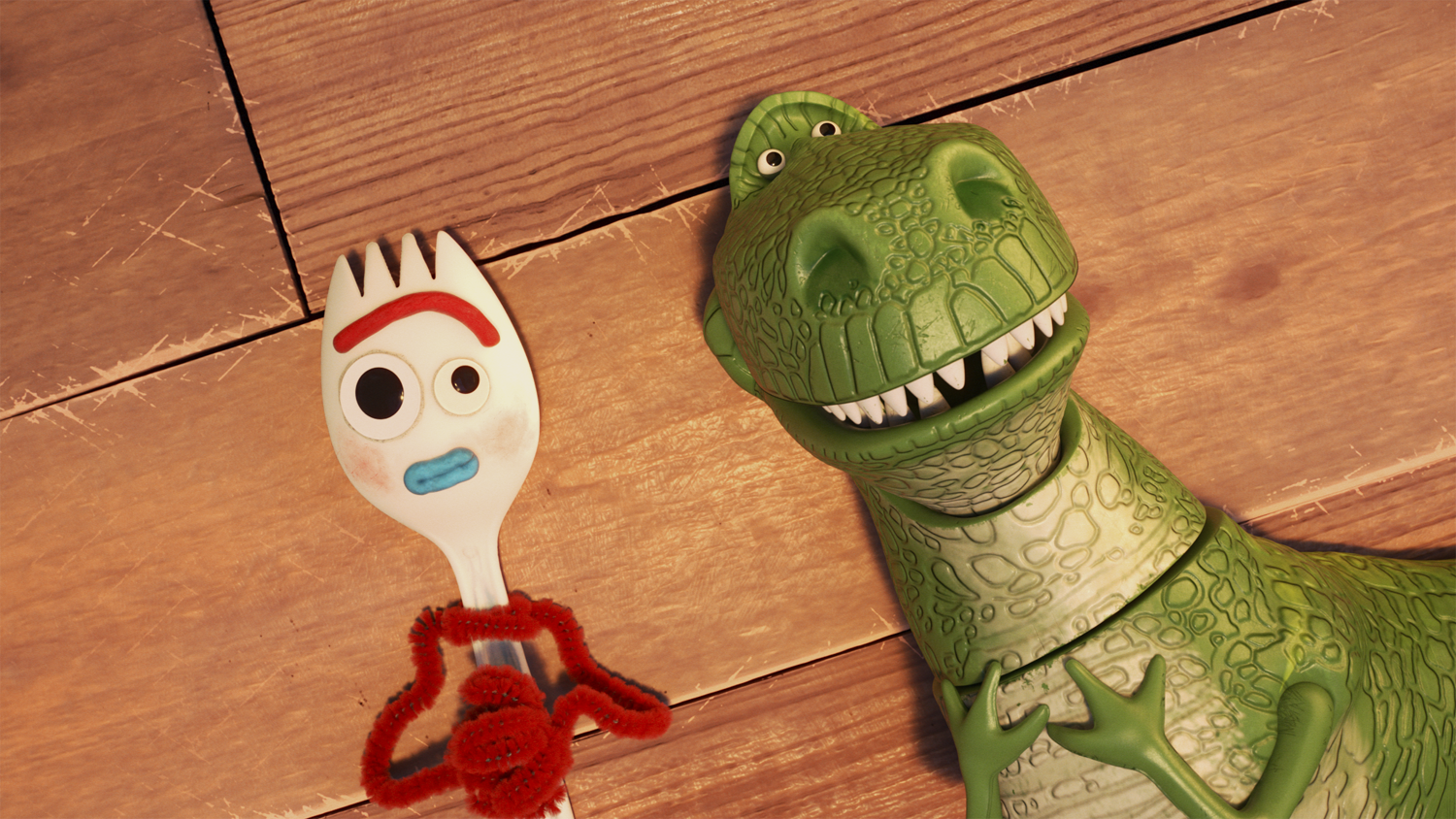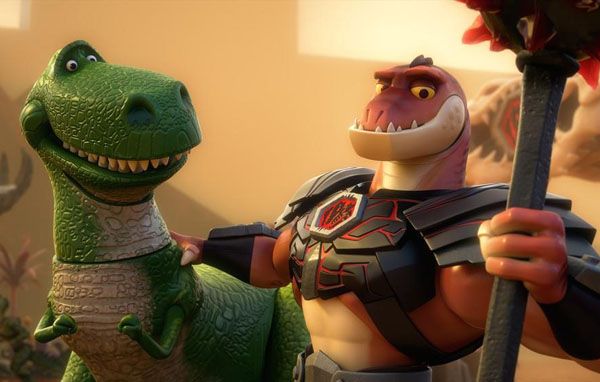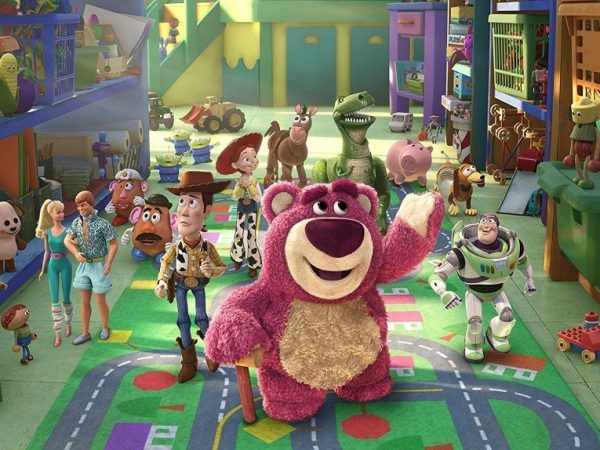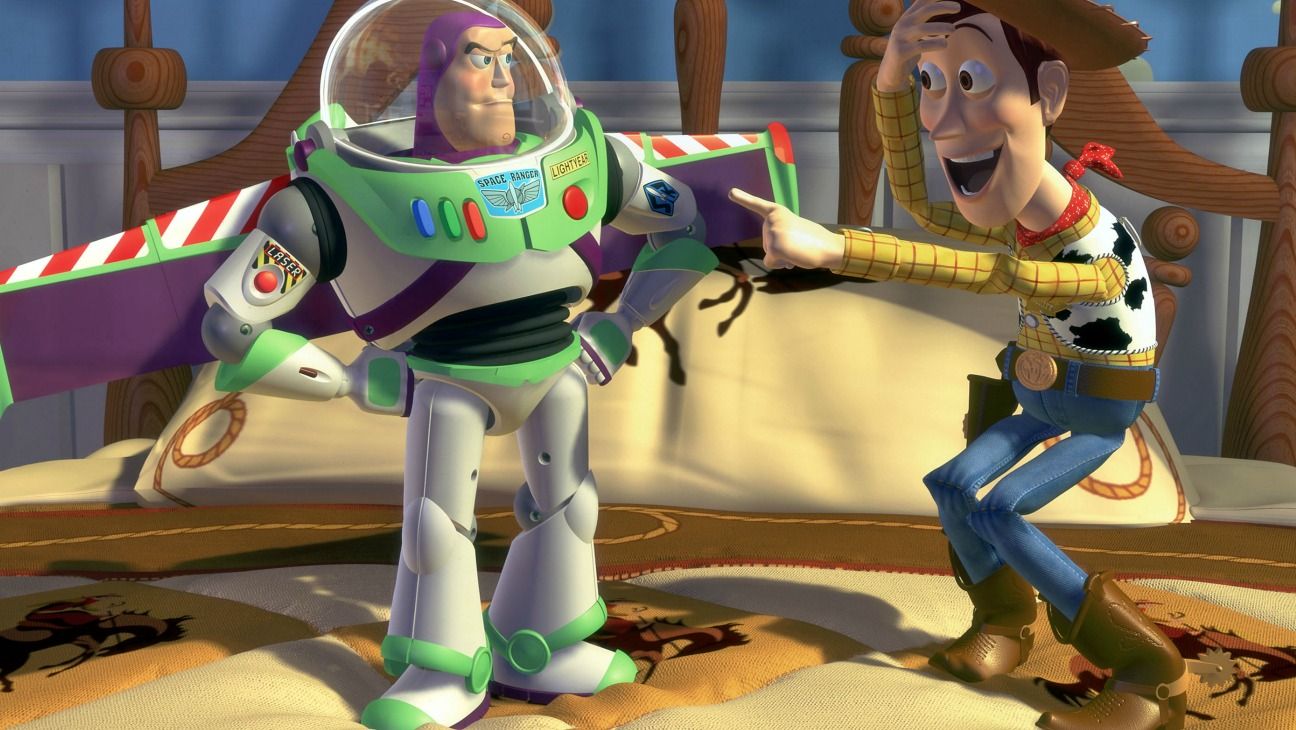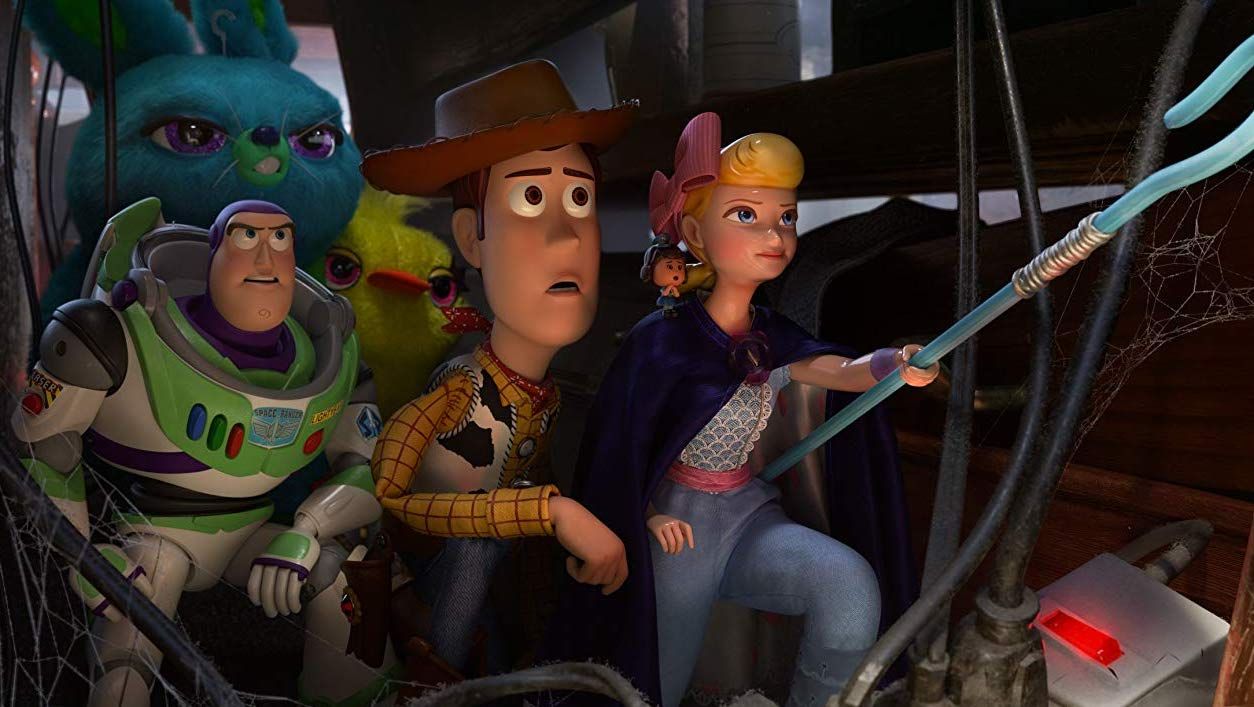2020 is a big year for the Toy Story franchise. It’s the 25th anniversary of the first film and the 10th anniversary of Toy Story 3. These are movies that reshaped not only the world of animation but the way that viewers watch and process computer-generated characters. Up until Toy Story, CGI had mainly been utilized for creatures of some kind – the metallic villain of T2 or the dinosaurs from Jurassic Park. Computer-generated images were used to inspire awe or terror. With Toy Story, you could actually understand what the computer-animated characters were feeling. The computer, that cold and calculating machine, was utilized expressly for emotion. And that cannot be overstated. Anytime in the past 25 years that you’ve found yourself choking up at a Pixar movie, or any computer-animated feat, you can blame on Toy Story.
So, it’s with this spirit of reflection and warm remembrance that we look back at the entire Toy Story universe. Not only will we rank and reflect on the four Toy Story feature films but also the spin-off animated pilot, the shorts, and the holiday specials. The Toy Story universe is large and expansive — and we’re celebrating it all.
12. Buzz Lightyear of Star Command: The Adventure Begins (2000)
If you’ve never heard of Buzz Lightyear of Star Command: The Adventure Begins, that’s okay. It was a traditionally animated, direct-to-video feature that also served as the extended pilot to the short-lived animated series Buzz Lightyear of Star Command. While Pixar wasn’t involved in the television series, aside from creating the wordless, 30-second intro, they were much more present for the movie/pilot. They created a nearly three-minute opening sequence, featuring Tim Allen (who reprises his role for the rest of the movie), R. Lee Ermey, Wallace Shawn, and Joe Ranft (as Wheezy). Weirdly, Finding Nemo director Andrew Stanton voices Hamm and Mr. Potato Head doesn’t appear due to a dispute at the time with Hasbro. (Tom Hanks’ brother, Jim, voices Woody.) Pixar also animated the logo and a graphics-heavy introduction of the film’s characters. The rest of the movie isn’t bad, exactly. It’s directed by Tad Stones, the guiding force of the early days of Walt Disney Television Animation and the creator of Darkwing Duck, so the story is competently told. But it’s more of an oddball piece of Toy Story miscellanea, than an actual compelling piece of the larger story.
11. “Lamp Life” (2020)
Originally intended as a bonus feature for the home video release of Toy Story 4, “Lamp Life” got some additional buzz when it became a Disney+ exclusive. Unfortunately, the short itself is pretty lackluster. "Lamp Life" was written and directed by Valerie LaPointe, a story artist on Toy Story 4 who was involved with the (re) development of the Bo character (voiced here once again by Annie Potts), so it’s understandable as to why she would want to make a short film detailing the time between when Bo left the gang and when she and Woody reconnected. But there isn’t a lot of story there; it isn’t all that funny or interesting and feels like the equivalent of Toy Story fan fiction. There are definitely some cute moments, like a montage of Bo’s environments over the years, and it’s great to be back in Toy Story 4’s irresistible carnival setting at the beginning and end of the short, but this short is kind of a drag. And having Tom Hanks’ brother Jim fill in for him as Woody (as he often does on theme park attractions, videogames and toys) doesn’t help anything either.
10. “Partysaurus Rex” (2012)
“What up fishes?” The concept for “Partysaurus Rex,” a short film that accompanied the 3D theatrical re-release of Finding Nemo (remember when they were doing that?), is pretty simple: the other toys label Rex (Wallace Shawn) a buzzkill after he literally bursts a giant bubble. Dubbed “Partypooper Rex” by Potato Head, he heads off to the bathtub with Bonnie and when she gets out, is coerced by the other bathtub toys to turn the water back on and get the party going. Thus, Partypooper Rex is transformed into Partysaurus Rex. The short, written and directed by longtime Pixar artist Mark Walsh, is really, really funny and the way that Rex transforms a suburban bathtub into a debauched rave is spellbinding, with some of the most extreme and vibrant lighting that Pixar has ever done and some killer dance tunes courtesy of American electronic artist BT. But it’s ultimately pretty one-note and Rex’s decision to ultimately flood the bathtub seems questionable. “Partysaurus Rex” is notable for being primarily animated at the now shuttered Pixar Canada campus, for being the final “Toy Story Toon” (for now) and for inspiring an after-hours hard-ticket event at Walt Disney World’s water park Typhoon Lagoon.
9. “Hawaiian Vacation” (2011)
The first “Toy Story Toon” short, released a year after Toy Story 3 (and attached to Cars 2), “Hawaiian Vacation” is a beautifully animated charmer. Set during Bonnie’s winter vacation, Ken (Michael Keaton) and Barbie (Jodi Benson) think that they’re going with her. When they open Bonnie’s backpack and discover they’re still at the house, the rest of the toys rally and attempt to give them their dream Hawaiian vacation. (Keep an eye out for a number of Barbie’s most iconic outfits, including her zebra-print bathing suit.) Keaton was one of the great additions to the Toy Story universe (his subsequent disappearance from the franchise is baffling), so to see him share center stage is a real treat, especially in a short that is so warm and loving. Director Gary Rydstrom, a Pixar alum (he directed the short film “Lifted” and was supposed to make Newt) and Oscar-winning sound designer, knows exactly what makes these characters so special and, after the traumatic conclusion of Toy Story 3, gently reminds us that the characters will still be around, for as long as kids need them. The short is notable for being the second Pixar production to feature live-action photography (after WALL•E), this time of fish and sharks, and for the return of Buzz’s Spanish mode, first introduced in Toy Story 3.
8. Toy Story of Terror! (2013)
Pixar’s first half-hour Toy Story holiday special is a whimsical ode to classic horror films. Toy Story of Terror!, written and directed by Pixar great Angus MacLane, follows the toys as they spend the rain-soaked night in a creepy roadside motel. (Bonnie’s mom has a flat tire.) As the night progresses, the toys get picked off one-by-one by some unseen force. For a Halloween special, it’s reasonably scary (apparently MacLane’s original pitch was too intense for John Lasseter), with the animators getting a lot of mileage out of Buzz’s glow-in-the-dark paneling as they skitter through crawlspaces, accompanied by Michael Giacchino’s moody score. And it was lovely they chose to give Jesse (Joan Cusack) the spotlight here. She’s got a surprisingly emotional arc involving her claustrophobia that gives all the Halloween-time fun a welcome psychological dimension. The special is important for giving Combat Carl, the G.I. Joe-style toy destroyed by Sid in the first Toy Story, a voice (it’s Carl Weathers!) and his diminutive counterpart, Combat Carl Jr. Even an overly familiar villain plot (shades of Toy Story 2) can’t dampen the fun, especially when it’s introducing oddball new characters (we love the Transformers-ish Transitron), making Toy Story of Terror a new, not-so-spooky Halloween classic for the entire family.
7. Toy Story 2 (1999)
Originally envisioned as a cheap, direct-to-video sequel, Toy Story 2 was rescued from potential bargain bin obscurity by Disney executives, who bumped the runtime from an hour to 90 minutes and scheduled a splashy theatrical debut. But less than a year before it was scheduled to hit theaters (just after the release of A Bug’s Life), the sequel was rescued and dramatically reworked by original director John Lasseter. The resulting film was the rare sequel that many consider superior to the original. And it’s true – Toy Story 2 is really astounding, from its more sophisticated visuals (human characters are still, at this point, a nightmare) to a truly devastating emotional undercurrent, exemplified by Jesse’s song (sung by Sarah McLaughlin) about being left behind. The sequel showcases just how unwilling Pixar was to simply repeat the formula that made the original film so great, splitting up the characters in interesting ways, giving Woody a complicated and tragic backstory, and introducing a ton of brand-new characters (some, like Barbie, would prove essential). Woody’s physiology is even changed, as early on his arm is torn and he ends the movie with a bit of extra fluff in his bicep. It also established that, while the first movie was about the joy of being loved by a child, the franchise’s chief concerns were much more melancholic.
6. “Small Fry” (2011)
Another mini masterpiece by Angus MacLane, “Small Fry,” which played theatrically in front of The Muppets, follows what happens when Buzz (Tim Allen) is replaced by a kids meal version of himself (Teddy Newton) while Bonnie visits a chicken fast-food joint called Poultry Palace. Buzz then finds himself as part of a self-help group with a bunch of other discarded kids meal toys, including such lovable oddballs as DJ Blue Jay, Lizard Wizard, and a toy based on failed 1981 live-action Disney movie Condorman. “Small Fry” is clever and snappy, animated by the Pixar Canada team with a lot of enthusiasm and attention to detail (like the cheap molding on the kids toys), but more importantly, the short is so important because it showcases a different, previously unseen corner of the Toy Story world: the lonely life of fast-food toys. They’re sometimes just as rabidly collected as regular toys, but they’re much smaller and easier to discard (and forget about). Melancholic and hilarious in a way that only something Toy Story-related can be, “Small Fry” is the very best of the “Toy Story Toons” and a testament to just how much elasticity the core concept has. Pixar would be smart to assign the next feature-length Toy Story joint to MacLane. His work on the short and holiday special prove there’s nobody better suited for the job.
5. Forky Asks a Question (2019 – 2020)
This series of shorts, which debuted along with the rest of Disney+ in November 2019, saw the breakout star of Toy Story 4, Forky (Tony Hale) ask a series of important questions – everything from “What Is Love?” to “What Is Ready?” But Forky Asks a Question, styled like an educational program from the 1980s (but without any actual educational value), saw the character digging into deeply philosophical territory along the way. The result was arguably the silliest and, at the same time, most profound short-form Toy Story material that Pixar had ever produced. Written and directed by Pixar legend Bob Peterson, the installments managed to bring together comedy legends Mel Brooks, Carol Burnett, Carl Reiner and Betty White in a soap opera-worthy melodrama (“What Is Love?”), pay tribute to British syntax (“What is Computer?”), and even introduce a character cut from Toy Story 4 (detective Rib Tickles, voiced by Aloma Wright) in “What is a Pet?” By the end of the final installment (“What is Reading?”), the entire series of shorts took on an even wilder, more metatextual dimension. An undeniable highlight of the franchise (and of the still young Disney+ platform), with any luck we’ll be getting new episodes of Forky Asks a Question very soon.
4. Toy Story That Time Forgot (2014)
Pixar’s second and, as of now, last Toy Story holiday special, Toy Story That Time Forgot, is not a typical Christmas-themed half hour. Set right after Christmas, when Bonnie goes on a playdate with her friend Mason. Bonnie brings her toys, of course, including Trixie (Kristen Schaal) who is tired of never being cast as a dinosaur when Bonnie plays. The gang meets up with a band of dinosaur warrior action figures that Mason got for Christmas, and things get very weird. Originally envisioned as a short film, John Lasseter liked the idea so much that he upgraded it to a half-hour special. With nods to Planet of the Apes and classic Star Trek, the world of Toy Story That Time Forgot is wholly unique; the battle dinosaurs have a rich mythology perfectly suitable for a 1980s action figure line and their designs are, like the special itself, streamlined and muscular (particularly Reptillus Maximus, voiced by Kevin McKidd). Written and directed by Brave co-director Steve Purcell, whose sense of dynamic action set pieces is admirable (particularly a gladiatorial match Woody and Buzz are thrown into). Purcell fearlessly pushes the animation and the storytelling to new places, while maintaining that trademark Toy Story sweetness (there’s a great message about the power of imagination and the need to unplug). After watching you will want your own army of battle-saurs.
3. Toy Story 3 (2010)
Please keep in mind that at one point, Toy Story 3 wasn’t even a Pixar movie. With discussions between Pixar’s Steve Jobs and Disney’s Michael Eisner breaking down, Disney quietly set about designing sequels to beloved Pixar classics without Pixar’s involvement. Circle 7 Animation was established, with the express purpose of producing these sequels, with work on a Monsters, Inc. follow-up (Lost in Scaradise) and Toy Story 3 officially underway. After Bob Iger assumed control of Disney, he quickly made a deal to buy Pixar, shut down Circle 7 and canceled this off-brand Toy Story 3.
Shortly thereafter, he announced that Toy Story 3 would be produced at Pixar, with longtime editor Lee Unkrich making his directorial debut and Oscar-winning screenwriter Michael Arndt writing the screenplay. And the results were nothing short of incredible. The third installment saw Andy leaving for college and the gang winding up in a daycare ruled over by an evil teddy bear that smells like strawberries (Ned Beatty). Toy Story 3 was tonally unlike anything that came before it, feeling more like a hardened prison break movie (for the first time there isn’t a Randy Newman ditty until the credits) and introducing a number of new characters who would become hugely important to the franchise, most notably Bonnie Anderson, who would become the new owners of the toys. The final act, combining the harrowing incinerator sequence and the moment when Andy gives his toys to Bonnie, were some of the most emotionally draining moments in any Pixar film. And the results were huge. It was the highest grossing animated movie of all time at the time, and was only the third animated film to be nominated for the Best Picture Oscar. Damn right.
2. Toy Story (1995)
This was it. Not only was it the first Toy Story movie and the first Pixar film but it was the first feature-length computer-animated project. For a certain generation, it was our Snow White and the Seven Dwarfs. Initially envisioned as a half-hour Christmas special, Toy Story was an ambitious project by Pixar, a scrappy Bay Area company that had once been Industrial Light & Magic’s in-house computer division. They’d worked with Disney before, helping on the pioneering CAPS system that got rid of the old ink-and-paint system and adding some assistance to Tim Burton’s similarly ambitious stop-motion project The Nightmare Before Christmas. But what they were attempting with Toy Story was next-level. They chose toys because their hard plastic texture was a good fit for the computer’s processing systems, but it took a while to land the story, with Disney throwing Hollywood veterans (like Joss Whedon) into the mix with Pixar regulars and Disney exec Jeffrey Katzenberg pushing on an edgier, more cynical version of Woody that nearly derailed the entire project. But the movie that they arrived at, patently different from the animated fare Disney was producing at the time (it had songs by Randy Newman but no musical numbers), blew audiences away. It was a sweet but not sugary buddy movie starring two iconic toys (Tim Allen and Tom Hanks) who just wanted to return home. And yet, from such a small-scale concept, grew one of the most thrilling movies of all time – one that still dazzles even though the visuals are pretty creaky now. Toy Story was an inventive blast. It still is.
1. Toy Story 4 (2019)
The knee-jerk reaction to the announcement of Toy Story 4 was a nearly unanimous why? Why jeopardize an undeniably perfect trilogy of films with an unnecessary fourth installment? And Toy Story 4 justifies its existence from the word go: with a largely wordless, incredibly visceral action sequence with Woody rescuing RC Racer from a drain. It was followed by one of the most tender moments of the franchise, with Woody making the decision not to go with Bo (Annie Potts, returning for the first time since Toy Story 2, two decades earlier). Those opening moments are a show of the ambitions of new director Josh Cooley, who wrangles a sometimes-unwieldy narrative (combining plot threads involving a toy Bonnie creates, a family road trip, a local carnival and a dusty antique shop) while simultaneously pushing the visuals in some extreme new directions. (This is the first Toy Story that is actually widescreen, and the way that Cooley and his cinematographers play with lighting and perspective is mind-boggling.) The introduction of new characters, particularly Keegan Michael-Key and Jordan Peele’s Ducky and Bunny and Keanu Reeves’ Duke Caboom, alongside Hale’s Forky, give the franchise some fresh blood and through Forky, Woody gets a better understanding of what it means to be a toy. But the heart of Toy Story 4 lies with the relationship between Woody and Bo. The Toy Story films have always been built on the buddy movie chemistry between Woody and Buzz; it’s a much bigger gamble to center it on a romantic relationship between two toys. But the characterization of Bo, who for years has been a lost toy, is gorgeously contoured; she’s dynamic and empowered and bold. By the end of the movie, when Woody says goodbye to the rest of the toys (a moment that I found more emotionally devastating than the end of the third film), it’s something of a foregone conclusion. Woody would be an idiot to leave her behind again. Toy Story 4 is a movie where the motivation and decisions of the toys are based almost exclusively about what they want; it isn’t purely based on their children. The movie itself feels similarly liberated and wisely, at the end of the film, the door isn’t closed. Instead, this installment opens up an entire new galaxy of possibilities for some of your favorite characters. This franchise will undoubtedly … to infinity and beyond.

